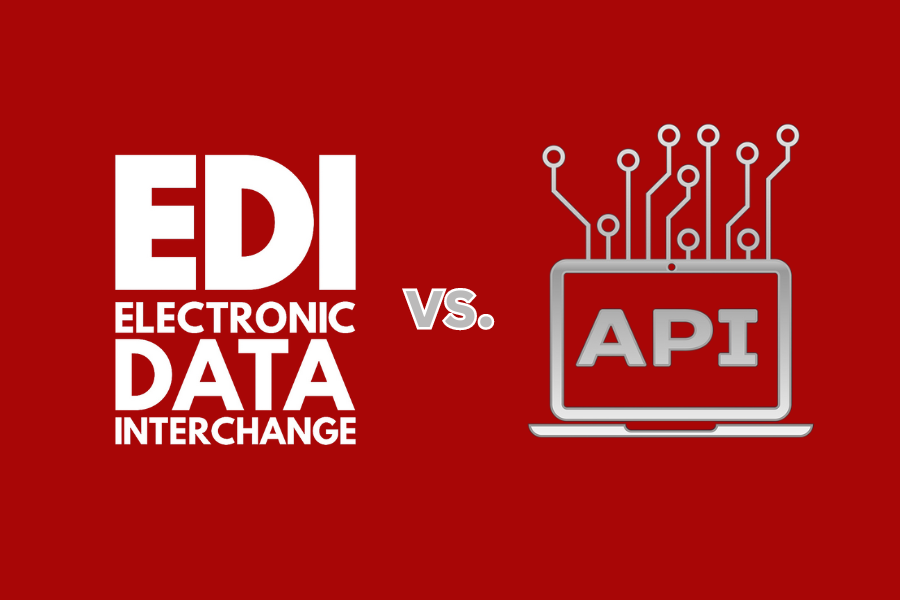EDI and API are two acronyms that may not mean much to you, but they are important for how data is exchanged and how systems communicate with each other. Both EDI and API can improve the speed and efficiency of supply chains by allowing multiple systems to send, receive, and share data. The method you choose may give your company a competitive edge.
What Do EDI and API Mean?
EDI stands for “electronic data interchange.” It is a technology that has been used in many industries since the 1970s, making it reliable and proven. EDI offers great security and dependability, and many older systems have EDI interfaces to enable fast data exchange among supply chain partners. EDI improves the speed and efficiency of supply chains by optimizing workflows, automating transactions, and reducing errors.
API is the newcomer. It was created in the early 2000s and is more commonly known as the programming interface between payment processors and e-commerce stores or various other applications. API stands for “application programming interface.” API enhances the flexibility and adaptability of a supply chain by supporting modern technology and allowing direct connections between software solutions.
How to Decide Between EDI and API
Since both EDI and API allow data sharing, but each has distinct features, which one is better for supply chain management? There isn’t a clear answer, as different businesses will benefit more from one or the other. The better question is, “Which one will give my business a greater competitive advantage?”
- Security: If security is crucial for your company, EDI has a clear benefit. EDI only allows access to authorized users, making it very secure. It also reduces the risk of data leaks since the data doesn’t travel through any third-party services. API is inherently less secure than EDI because API exposes some of its programming, which enables the integration between systems. API solutions can have varying levels of security and may have more exploitable security weaknesses than EDI.
- Data Transfer: EDI can transfer large amounts of data in one upload, while API may have difficulties with larger data transfers. On the other hand, API can connect with a broad range of software, allowing it to make multiple transfers quickly and easily. EDI is not as flexible as API in this way.
- Speed: If there is a lot of data to be moved among systems, EDI is the winner. But for the average consumer processing a transaction or a business monitoring its supply chain, API offers enough speed to make it comparable.
- Human Intervention: EDI uses a shared and precise vocabulary to reduce human intervention. EDI also lowers the need to process data manually, as many processes can be automated. However, it may need more maintenance than API. API may need human intervention, but it is also much more flexible and adaptable to various system interfaces.
Make Your Choice
Supply chain management is an area where many companies can improve and gain a competitive advantage. When you are aware of where goods are in the supply chain, you are ahead of the game. So, which interface is best for your company? In fact, you might even use both, depending on your business needs and those of your trading partners.
If you still aren’t sure which is right for you, we’re here to help! We’re happy to work with you to find the best solution for your business. In fact, ASI can also help implement, integrate, and customize your business software solutions, allowing for greater efficiency and profitability. Contact us or schedule your free consultation today to get started.

